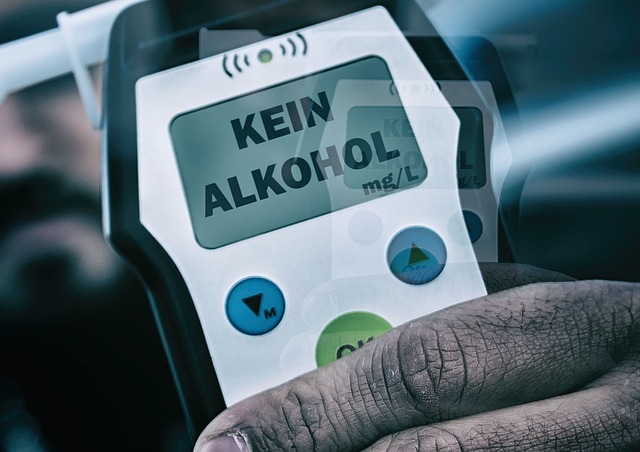Recidivism, a complex issue, is tackled through targeted interventions focusing on education, vocational training, cognitive behavioral therapy, and community support. Biological Assessment Level (BAL) testing plays a crucial role in understanding offender behavior and implementing these strategies. By identifying root causes, BAL testing enables the development of precise risk assessment models and evidence-based programs. Challenges like bias and variability are overcome through standardized protocols, diverse evaluators, and quality control measures. Integrating Recidivism Reduction Strategies enhances test reliability, leading to better resource allocation and personalized plans for high-risk individuals. Future advancements in BAL testing technology aim to further reduce recidivism rates through enhanced prediction models and AI integration.
In the pursuit of a safer society, understanding recidivism and its impact is paramount. This article delves into the crucial role of Breath Alcohol (BAL) testing within the criminal justice system, highlighting its potential to drive down recidivism rates. We explore current challenges in BAL testing accuracy, offer solutions for enhancement, and showcase successful real-world implementations. Furthermore, we examine innovative strategies aimed at reducing recidivism, with a focus on how advanced technology can revolutionize criminal rehabilitation.
- Understanding Recidivism and Its Impact
- The Role of BAL Testing in Criminal Justice
- Enhancing Accuracy: Challenges and Solutions in BAL Testing
- Exploring Recidivism Reduction Strategies
- Case Studies: Successful Implementation of BAL Testing
- Future Prospects: Continuous Improvement for Accurate Results
Understanding Recidivism and Its Impact

Recidivism, or the repetition of criminal behavior, is a complex issue with significant societal implications. It not only affects individuals but also contributes to systemic challenges within communities and the justice system. Understanding recidivism rates and their underlying causes is crucial for implementing effective strategies aimed at reduction.
Several factors influence an individual’s likelihood of reoffending, including past criminal history, social and economic circumstances, mental health, and substance abuse issues. By identifying these risk factors, policymakers and practitioners can develop targeted interventions. Recidivism reduction strategies encompass a range of approaches, from evidence-based programs focusing on education, vocational training, and cognitive behavioral therapy, to community-based initiatives that foster reintegration and support systems for ex-offenders. These strategies aim to disrupt the cycle of incarceration by addressing the root causes of criminal behavior and equipping individuals with the tools needed for successful reentry into society.
The Role of BAL Testing in Criminal Justice

In the realm of criminal justice, Bal (Biological Assessment Level) testing plays a pivotal role in understanding and managing offender behavior, particularly when it comes to recidivism reduction strategies. This scientific approach provides valuable insights into an individual’s biological makeup, allowing for more informed decision-making within the justice system. By assessing various physiological indicators, BAL testing helps identify underlying factors that may contribute to criminal behavior, thereby enabling professionals to develop tailored interventions.
The significance lies in its ability to support evidence-based practices aimed at reducing repeat offenses. Through accurate results, corrections officials can implement targeted programs and treatments, address specific needs, and ultimately foster positive changes in offender lives. This proactive approach has the potential to break the cycle of recidivism, ensuring a safer society while also offering individuals opportunities for rehabilitation and reintegration.
Enhancing Accuracy: Challenges and Solutions in BAL Testing

Enhancing Accuracy: Challenges and Solutions in BAL Testing
BAL (Biological Assessment Level) testing plays a critical role in criminal justice systems, particularly in predicting recidivism. However, achieving accurate results is not without challenges. One significant hurdle is the potential for bias in the data collection process, which can be influenced by factors like cultural differences, language barriers, and differing interpretations of behaviors. To mitigate these biases, standardized protocols must be implemented and trainers should ensure that evaluators are diverse and well-trained, reflecting the populations they assess.
Furthermore, the subjectivity inherent in certain behavioral observations requires robust quality control measures. Implementing multi-rater reliability methods, where multiple independent observers rate the same behavior, can significantly enhance accuracy. Additionally, integrating Recidivism Reduction Strategies, such as evidence-based interventions and program participation, into the testing framework has proven effective in improving outcomes. These strategies not only refine the assessment but also empower individuals to make positive changes, ultimately reducing recidivist tendencies.
Exploring Recidivism Reduction Strategies

In the pursuit of achieving accurate and reliable results in BAL testing, it’s crucial to explore Recidivism Reduction Strategies. These strategies aim to minimize false positives and negatives, ensuring that the data collected truly reflects an individual’s behavior or product performance. By implementing advanced statistical methods, standardized protocols, and continuous quality control measures, researchers and professionals can enhance the validity of their findings.
One key aspect of Recidivism Reduction Strategies is the use of multiple validation techniques. This involves cross-referencing results from different testing methods, employing robust data analysis tools, and incorporating expert opinions to minimize errors. Additionally, regular training sessions for personnel involved in BAL testing help maintain consistency and accuracy. Such approaches not only enhance the reliability of test outcomes but also contribute to making informed decisions, ultimately fostering better strategies for behavior modification or product improvement.
Case Studies: Successful Implementation of BAL Testing

In various jurisdictions, the successful implementation of BAL (Biological Marker-based Assessment) testing has been a game-changer in Recidivism Reduction Strategies. Case studies have shown that using specific biological markers can provide more accurate predictions of reoffending rates compared to traditional methods alone. For instance, research conducted in several states revealed that incorporating BAL data into risk assessment models significantly improved the identification of high-risk individuals, allowing for more targeted interventions and resources allocation.
These real-world applications have demonstrated that BAL testing can be a powerful tool in criminal justice systems. By providing evidence-based insights, it aids in developing personalized recidivism reduction plans. As a result, not only does it enhance public safety by potentially preventing future crimes but also optimizes the use of resources, ensuring that interventions are focused on those who most need them.
Future Prospects: Continuous Improvement for Accurate Results

As technology advances, BAL testing methods are expected to evolve, paving the way for even more accurate results. Continuous innovation in this field can significantly impact various sectors, particularly criminal justice systems. By implementing enhanced testing techniques, it becomes possible to improve prediction models and reduce recidivism rates—a key focus for many institutions aiming to rehabilitate offenders effectively.
Future prospects include the development of more sophisticated algorithms that analyze complex data sets, leading to better-informed decisions. Additionally, integrating artificial intelligence could revolutionize BAL testing by offering personalized assessment strategies tailored to individual needs. These advancements have the potential to enhance the overall accuracy and reliability of risk assessments, ultimately contributing to more successful reintegration programs and safer communities.
In conclusion, Bal testing plays a pivotal role in navigating criminal justice systems by offering accurate results that can significantly impact recidivism reduction strategies. By addressing challenges and leveraging technological advancements, we can ensure the enhanced accuracy of these tests. Successful case studies highlight the potential for BAL testing to foster safer communities. As we look towards the future, continuous improvement in this field is essential to maximize the benefits, ultimately contributing to more effective recidivism reduction strategies.






